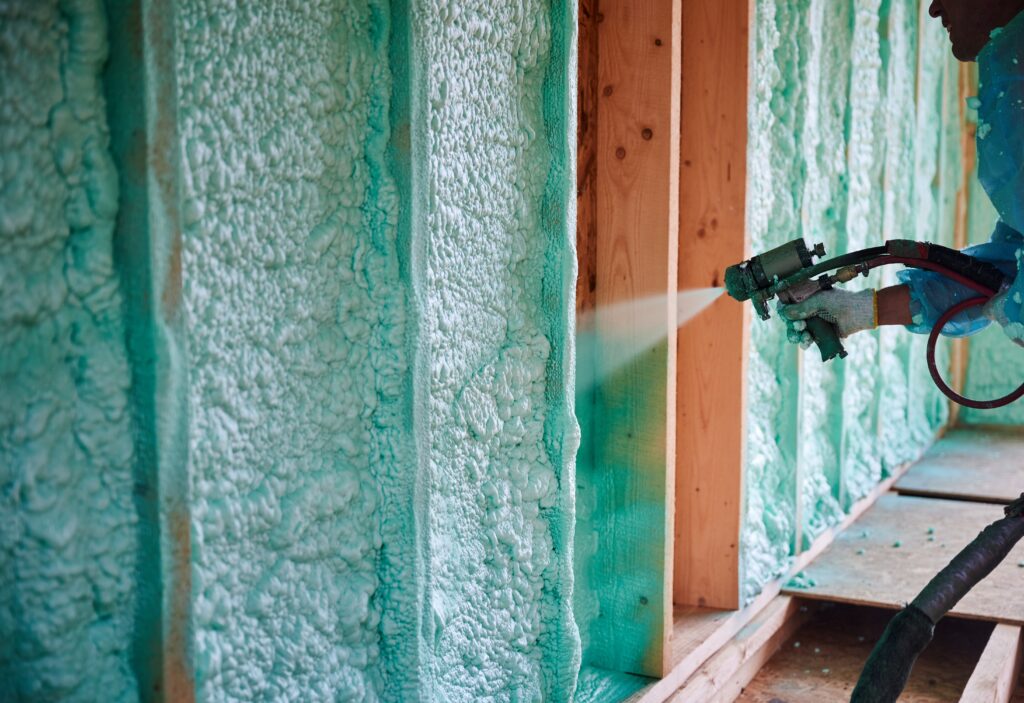Do You Need a Thermal Barrier When Using Spray Foam?
When considering spray foam insulation, a common question arises: Do you need a thermal barrier? A thermal barrier is a material that serves to protect the interior living space from the combustible nature of spray foam by providing crucial fire safety. Its primary role is to offer 15-minute protection, allowing occupants time to escape in the event of a fire. Misunderstandings often exist regarding the necessity and application of thermal barriers with spray foam insulation. Some believe that spray foam alone is sufficient for fire protection, while others are unsure about when and where these barriers are required. This article aims to clarify these misconceptions by exploring when a thermal barrier is essential in conjunction with spray foam insulation. By understanding these requirements, homeowners can ensure their properties meet fire safety standards and comply with building regulations effectively. For those considering options for crawl space improvement or crawl space encapsulation, it’s important to understand how thermal barriers play a role in these areas as well. Additionally, homeowners can benefit from reading reviews about various thermal barrier products available in the market. For more detailed information on the subject, this blog provides valuable insights into the topic. Understanding Thermal Barriers with Spray Foam Definition and Importance of Thermal Barriers A thermal barrier is a protective layer installed between spray foam insulation and interior living spaces. Its primary function is to enhance building safety by providing a critical layer of fire protection. In the event of a fire, the thermal barrier serves to: Delay Ignition: It slows down the ignition process of the underlying spray foam. Provide Escape Time: Offers occupants at least 15 minutes to evacuate safely, aligning with the standards set by building codes. Thermal barriers are essential in reducing the risk of rapid fire spread, ultimately safeguarding lives and property. Functionality with Spray Foam Insulation When used with spray foam insulation, thermal barriers act as a shield against high temperatures. Here’s how they work: Heat Resistance: Materials like half-inch gypsum board can withstand heat for a specified duration, preventing direct exposure of the combustible foam. Integrity Maintenance: The barrier helps maintain structural integrity during a fire, thereby minimizing damage. By incorporating thermal barriers, buildings meet safety regulations while maximizing the insulating benefits of spray foam. This combination ensures compliance with fire safety standards without compromising on energy efficiency or comfort. The International Residential Code (IRC) and Thermal Barriers Requirements The International Residential Code (IRC) is a set of building codes that ensure safety and legality in residential construction. It was developed by the International Code Council and outlines the requirements that builders must follow to create safe, sustainable, and modern structures. One important aspect covered by the IRC is insulation materials, specifically foam plastic insulation like spray foam. IRC Requirements for Foam Plastic Insulation According to IRC regulations for insulation, foam plastic insulation must be separated from the interior living space by an approved thermal barrier. This requirement is crucial for both compliance and the safety of residents in case of a fire. The code specifies: Thermal Barrier Requirement: Foam plastic insulation should be covered with a thermal barrier that provides at least 15 minutes of protection against fire exposure. Material Standards: Commonly used materials that meet these requirements include half-inch gypsum board or equivalent products approved through rigorous testing. Key IRC Requirements for Thermal Barriers The IRC defines a thermal barrier as something that slows down heat transfer and provides protection during a fire. This delay is important for keeping people safe by giving them more time to escape. The 15-Minute Rule: A key part of the IRC’s thermal barrier requirements is the “15-minute rule.” This rule says that any material used as a thermal barrier must resist fire for at least 15 minutes. This time is critical for allowing people to evacuate safely. Approved Materials: According to IRC guidelines, materials like gypsum board are widely accepted as thermal barriers because they have been proven to meet the 15-minute rule. Other materials may also qualify if they pass recognized tests showing equal performance under fire conditions. Importance of Compliance with Insulation Code Following the insulation code requirements set by the IRC is essential for several reasons: Safety Assurance: By following these regulations, builders and contractors can ensure that installations do not put occupants’ safety at risk. Legal Obligation: Meeting IRC standards protects builders from potential legal issues arising from non-compliance and ensures that constructions are up to code. Understanding when a thermal barrier is necessary with spray foam involves recognizing how these barriers contribute to creating safer living environments. In this article, we will explore practical applications of these requirements in different areas of your home and discuss alternatives to traditional thermal barriers. Determining When Thermal Barriers are Necessary with Spray Foam Insulation Specific Areas That Require Thermal Barriers Basement Rim Joists Importance: Basement rim joists often serve as a critical connection point between the foundation and the upper floors of a home. They are pivotal in maintaining structural integrity and providing insulation against outdoor air infiltration. Thermal Barrier Requirement: Typically, when spray foam is applied to basement rim joists, a thermal barrier is required if these areas are part of or lead directly into living spaces. This is due to their potential as conduits for fire spread. Use Cases: If basement areas are used for storage or as utility rooms, a thermal barrier may be necessary. However, in cases where the basement is unoccupied or not used for any substantial activity, exemptions might apply. Consulting local building codes is advisable for specific guidelines. Attic Spaces Role: Attics can vary from being crawl spaces to fully functional storage areas or even living spaces. The use and configuration of an attic significantly influence the necessity for a thermal barrier when using spray foam insulation. Regulatory Requirements: For attics that serve as living quarters or accessible storage spaces, applying a thermal barrier over spray foam insulation is generally mandated. This requirement ensures safety by delaying the fire’s penetration through


